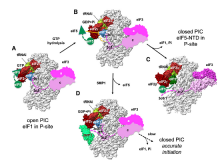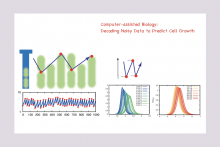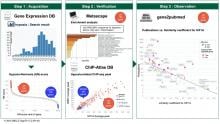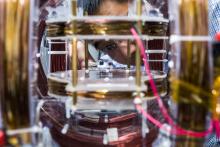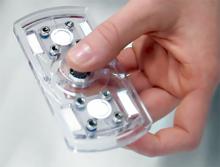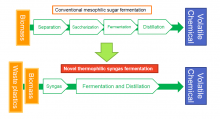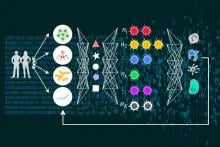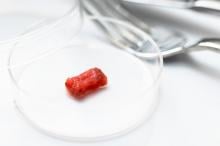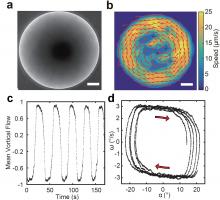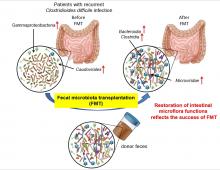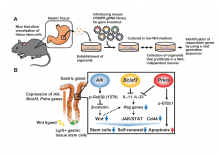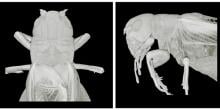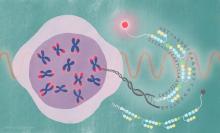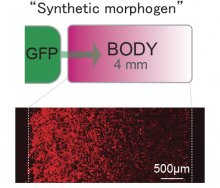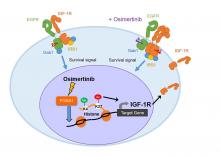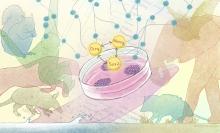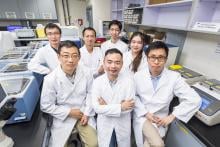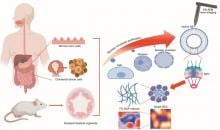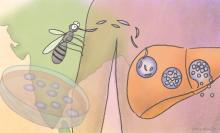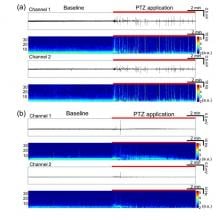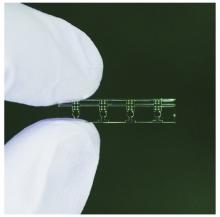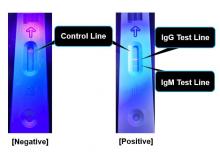Biology Biotechnology
News
17 Aug 2021
Cells translate their genetic material at rapid rates with exquisite precision to reproduce, repair damage or even combat disease. But the process can deregulate and give rise to disease. Byproducts of errant processes can build up like gunk in the gears, especially around neurons, breaking down the repair mechanisms and causing further damage and even neurodegenerative disorders such as Alzheimer’s disease.
15 Jul 2021
Scientists have developed a rapid, highly accurate test to detect antibodies against the spike protein of SARS-CoV-2 in human serum, opening a new avenue for understanding the full extent of the pandemic and evaluating the effectiveness of vaccines.
08 Jul 2021
Researchers at The University of Tokyo Institute of Industrial Science use artificial intelligence to predict the size of cells over time without the need for simplifying assumptions, which may lead to a new understanding of microbiology principles and improved drug manufacturing from recombinant bacteria
09 Jun 2021
Publication bias, or the tendency of researchers and journals to not publish uninteresting findings, plagues much of the natural sciences and especially biomedical research. Hiroshima University researchers have developed a meta-analytic technique exploiting publicly available transcriptome databases that avoids the problem—and in so doing, discovered four genes previously unknown to be associated with responding to low-oxygen stress.
13 May 2021
A spray-on magnetic coat turns any object into a robot controlled by a magnetic field. The biocompatible robots can walk, crawl and roll, and switch motions on demand.
13 May 2021
A spinning toy meets hydrodynamics and sets point-of-care diagnostics in motion.
12 May 2021
Acetone, a volatile solvent used for everything from removing nail polish and cleaning textiles to manufacturing plastics, could get a sustainability boost from a new strain of bacteria engineered by a research team based in Japan.
10 Mar 2021
Researchers at The University of Tokyo use the mathematics of adaptive learning and artificial intelligence to describe how T helper cells adjust the response of the vertebrate immune system, which may lead to new vaccines and treatments for infections
02 Mar 2021
Researchers at The University of Tokyo develop a method of culturing meat in the laboratory in the form of millimeter-scale contractile beef muscle that closely simulates steak meat
19 Feb 2021
An international team led by Professor Yilin Wu, Associate Professor of the Department of Physics at The Chinese University of Hong Kong (CUHK) has made a novel conceptual advance in the field of active matter science. The team discovered a new route in which the self-organisation of active fluids in space and time can be controlled by a single material property called viscoelasticity. This new finding may pave the way for fabricating a new class of self-driven devices and materials, such as the ability to control the rhythmic movement of soft robots without relying on electronic circuits, and for the study of microbial physiology. It has been published in the scientific journal Nature.
19 Feb 2021
Undergraduate students explore a more efficient way to measure protein-containing vessels released by cells
17 Feb 2021
Researchers from DGIST have now found a way to keep living, wet cells viable in an ultra-high-vacuum environment, using graphene, allowing—like never before—accurate high-resolution visualization of the undistorted molecular structure and distribution of lipids in cell membranes. This could enhance our bioimaging abilities considerably, improving our understanding of mechanisms underlying complex diseases such as cancers and Alzheimer’s
10 Feb 2021
In a study published in Gastroenterology – Researchers at Osaka City University and The Institute for Medical Science, The University of Tokyo, in collaboration with Brigham and Women's Hospital in Boston, report the intestinal bacterial and viral metagenome information from the fecal samples of patients with recurrent Clostridioides difficile infection (rCDI). This comprehensive analysis reveals the bacteria and phages involved in pathogenesis in rCDI, and their remarkable pathways important for the recovery of intestinal flora function.
09 Feb 2021
Tissue stem cells can self-renew and differentiate, supplying cells necessary for tissues at various developmental stages. However, detailed analysis in vivo is difficult, so the molecular mechanisms underlying the stemness of gastric tissue stem cells have remained a mystery. Here, by using organoids that mimic tissue structure and function in vivo and GeCKO screening to inactivate arbitrary genes, Alk, Bclaf3 and Prkra have been identified as genes regulating stemness.
19 Jan 2021
New ‘armoured’ T cells attack cancer without being suppressed by drugs given to transplant patients to avoid organ rejection.
15 Jan 2021
A research group compared how crickets adapt to limb removal, revealing more about adoptive locomotion and the mechanisms underpinning it.
19 Nov 2020
A repetitive DNA sequence that causes health risks when it malfunctions can now be watched inside living cells using a synthetic tool
20 Oct 2020
Researchers at Kanazawa University and University of California, San Francisco report in Science that arbitrary proteins, when combined with anchoring and receptor proteins, can work as a signaling protein “morphogen” capable of engineered spatial patterning.
14 Oct 2020
Osaka City University unravels the atomic architecture of the “Nap” protein complex found on Mycoplasma pneumoniae.
06 Oct 2020
Researchers at Kanazawa University report in Nature Communications the mechanism making some lung-cancer patients resistant to the drug osimertinib. In addition, they suggest a combined drug treatment resolving osimertinib resistance in the case of cancer cells expressing low amounts of AXL, a protein belonging to the class of receptor tyrosine kinases.
07 Sep 2020
Scientists are learning about species adaptation by comparing their stem cell-related genes.
24 Jul 2020
While scientists still don’t fully understand the diverse nature of RNA molecules, it is believed that the proteins binding to them, called RNA-binding proteins, are associated with many disease formation. A research led by biomedical scientists from City University of Hong Kong (CityU) has developed a novel detection method, called CARPID, to identify binding proteins of specific RNAs in the living cells. It is expected the innovation can be applied in various cell research, from identifying biomarkers of cancer diagnosis to detecting potential drug targets for treating viral diseases.
10 Jul 2020
Scientists demonstrate that the information about host bacteria–bacteriophage (phage) associations derived from world’s first metagenome analysis is useful for the development of phage therapies against intestinal pathobionts.
06 Jul 2020
Researchers at Kanazawa University report in Biomaterials a high-speed atomic-force microscopy study of protein filaments in the nuclear pore complex. The visualization in real-time of the filaments’ dynamics is an important step in our understanding of molecular transport mechanisms between a cell nucleus and its surrounding medium.
02 Jul 2020
A method that involves infecting liver cells with mosquito-bred parasites could improve the study of malaria in India.
30 Jun 2020
Hiroshima University scientists will work on a low-cost sex selection system for bovines using their new technology to help grow dairy herds and boost the incomes of India’s smallholder farmers.
29 Jun 2020
Novel system for simultaneously measuring brain electrical signals from multiple zebrafish opens up path to cheaper and faster drug screening for neurological disorders
09 Jun 2020
A transparent container made by Nagoya University researchers allows easy and quick grafting of very young plants, with benefits for agriculture and plant research.
15 May 2020
The newly developed rapid testing kit detects COVID-19 antibodies, requiring only micro-liter volume of serum and 15 minutes of time for achieving results.
Events
Sorry, nothing coming up for this discipline
Researchers
Sorry, nothing coming up for this discipline
Giants in history
Sorry, nothing coming up for this discipline



